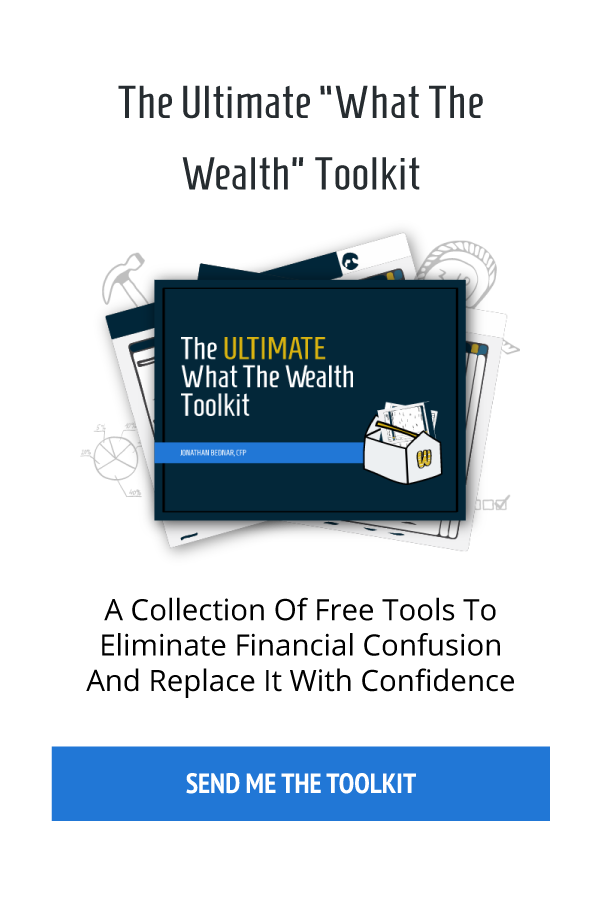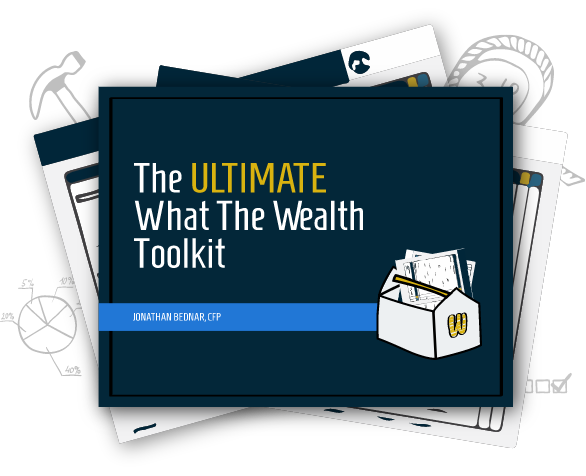In today’s episode, we’ll discuss bond laddering, an investment strategy that helps reduce risk and provides stability in your investment portfolio.
What is a Bond?
A bond is a debt security, like an IOU. You’re a “loaner, not an owner, when you buy a bond.” You’re lending money to the bond issuer, which can be a government, a municipality, or a corporation. You don’t have an ownership stake like when you buy stock in a company. In exchange for this loan, the issuer agrees to pay you interest, usually a fixed rate, for a set period of time and to repay you the face value when the bond matures.
If, for instance, you buy a $10,000 bond, you will receive interest payments for a set time, and once the bond matures, you can cash it in for the face value, the $10,000 you paid for it.
Bond Ratings
There are five types of bonds; treasury, savings, agency, municipal, and corporate, each with its own durations and levels of risk. But what I want to discuss is bond ratings, of which there are two. Bond ratings let people know if they’re investing in high-quality bonds.
Investment Grade Bonds
Investment grade bonds are issued by companies that have good credit ratings. A few different companies provide those ratings, including Standard & Poor’s and Moody’s. These rating agencies look at certain metrics to determine how likely a company is to make its interest payments on the bonds it’s issued and pay back the face value upon maturity.
Investment grade bonds are rated Baa/BBB- or higher.
Junk Bonds
Junk bonds, also called high-yield or non-investment grade bonds, are issued by companies with poor credit ratings meaning there is some risk that the issuer won’t be able to make its interest payments or pay back the face value upon maturity. Junk bonds are rated Ba-/BB+ or lower.
High yield/junk bonds are subject to higher interest rate, credit and liquidity risks than those graded BBB- and above. They generally should be part of a diversified portfolio for sophisticated investors.
These ratings are important to consider when you’re thinking of investing in bonds.
Bond Laddering
Bond laddering is a strategy that can help people building a portfolio to understand how bonds can fit in their retirement income plan.
The strategy entails buying bonds with different maturity dates. Just as the rungs on a ladder have different heights, the bonds in a ladder have different maturity dates. Bond laddering can help reduce investment, credit, and interest rate risks. It doesn’t solve all risk problems but does mitigate some risks, particularly interest rate risk.
As a bond in your ladder matures, you may choose to use that money to buy another bond. The strategy gives you a lot of flexibility and allows you to take advantage of favorable interest rates. If rates aren’t favorable, you can do something else with that money.
Interest Rates and Bond Prices
Bonds and interest rates have an inverse relationship. As interest rates go up, as they have been lately because the Fed is trying to tamp down inflation, bond values go down. As values go down, the bond yield or interest rate the bond pays goes up.
The reverse is also true. When the Fed raises interest rates, bond values go up, and the yield goes down. Interest rates are a key driver of how bonds work.
Bond Ladder
Here’s an example of a bond ladder:
You have a portfolio containing four bonds, each with a different maturity date. The dates are 2022, 2023, 2024, and 2025. When the Fed is raising rates to fight inflation, as is happening now, the yield increases. So you may take the money from your 2022 bond maturing and buy a new rung, maybe a bond with a maturity date in 2026.
The point of a bond ladder is you have this money when a bond reaches maturity, and you can work it into your overall investment strategy. That doesn’t necessarily mean making another investment. You might need that money to top off a recently depleted emergency fund or just want to keep it as cash on hand for whatever reason.
There is no set time frame for a bond ladder. You can create a three-year ladder, an eight-year ladder, a ten-year ladder, etc. Your time frame depends on your investment objectives, how you intend to use the ladder and your ultimate goal for the strategy.
Why Use a Bond Ladder?
There are several reasons a bond ladder can be a smart investment strategy.
Reduced Risk
Bond laddering seeks to reduce risk in your portfolio. You’re not as exposed to changing interest rates. Most bond rates are fixed, so you know the rate you will earn and how long you will earn it. You also know when you’re getting the principal amount back.
Increased Stability
Bond laddering adds stability to your portfolio. The fixed-payment nature of bonds can help balance out the volatility of stocks, which becomes increasingly important the closer you get to retirement.
Bonds are traditionally very stable compared to equities. That hasn’t been the case this year, thanks to the Fed raising rates several times and at big clips to try to quell inflation. But historically, bonds are stable. And even if prices fluctuate, that matters less in a bond ladder strategy; only the rates and maturity dates matter.
Acts as a War Chest
A bond ladder can be a great war chest. Let’s say you have a four-bond ladder for $100,000, $25,000 in each rung. As each rung matures, you have a war chest of $25,000. What do you do with it?
The original strategy would have you buy a new rung. So 2022 matures, and you buy a rung that matures in 2026. But you can consider another investment. If the market is down, it might be a good time to buy equities. There is never a guarantee with any investment, but I firmly believe that equities are a great place for long-term investors. Invest for the long-term in great companies that make things we use every day, are resilient, and offer growth.
You can also use your war chest to pay your living expenses for the next year, which can be an especially good strategy if the market is down. It allows your other investments to ride things out, so you don’t have to sell in a down market. That flexibility is one of the best recommendations for using a bond laddering strategy.
Individual Bonds vs. Bond ETFs
When buying bonds, you have two choices, individual bonds, and bond ETFs. Each has its advantages and disadvantages.
Individual Bonds
Advantages: You know what the interest payments and maturity dates are, which helps with planning when it comes to your future cash needs. You can avoid the fees associated with buying bond ETFs or mutual funds. There are fewer fees because there is no portfolio manager overseeing the fund.
Disadvantages: You may have difficulty finding high-quality bonds that match your desired maturity dates. There may be a commission that affects your return. You’ll have to keep track of multiple bonds and their maturity dates. Individual bonds lack the diversification that ETFs offer, which a basket of bonds provides, exposing you to more risk of default.
Bond ETFs
Advantages: ETFs offer more diversity and are screened to find high-quality bonds. They are traded on the exchange so they can be quickly and easily bought and sold, which provides liquidity.
Disadvantages: ETFs fluctuate up and down like the market and may trade above or below their asset value. Upon redemption (some redeem and some are perpetual), the value may be more or less than the cost.
ETFs carry additional risks such as not being diversified, possible trading halts, and index tracking errors.
These are some things to consider when deciding between individual and ETF bonds when creating your ladder.
Bond Risks
While bonds can be considered more conservative than some other investments, they, like any investment, aren’t without risk. The most common risk is interest rate risk. As interest rates go up, bond values go down. And as interest rates go down, values go up. In the current market, we’re seeing rates up and prices down. The risk is higher for bonds with longer maturity dates. Bonds with maturity rates ranging from one to three years offer less risk than those with maturity dates of 10, 15, 20, or 30 years.
There is a credit risk with bonds. Are the companies issuing the bonds credit-worthy or not? If not, there is a risk that they won’t be able to meet their interest payments or will default.
There is a reinvestment risk when bond laddering. You may not be able to replace a mature bond with a similar one with the same interest rate. The marketplace determines the rate based on what the Fed is up to.
Bond yields are subject to change. Certain call or special redemption features may exist which could impact yield.
The Bottom Line
Bond ladders can be a valuable tool for retirement planning, giving you a bucket strategy, war chest money, and providing the fixed income portion of your portfolio.
There are lots of bonds, and the bond universe is actually much larger than the equity universe, a huge part of the economy. Be aware of the bonds you are buying and the strategy you use to employ them.
If you have any questions, reach out to me. Check out my new YouTube channel. The videos are short, walk and talks, where I take a stroll and talk about whatever’s on my mind.
Listen to the Full Episode:
What You’ll Learn In Today’s Episode:
- What a bond is.
- How laddering can help reduce investment risk.
- The inverse relationship between bonds and interest rates.
- Why you might want to use a bond ladder in your portfolio.
- The two main things to pay attention to when it comes to bonds.
- Drawbacks to buying bonds.
Ideas Worth Sharing:
“When you buy a bond, you’re lending money to an issuer, and in exchange, the issuer agrees to pay you an interest rate and repay the value of that bond when it matures.” – Jonathan Bednar
“When I think of a bond, I think of the phrase, ‘loaner not an owner.’” – Jonathan Bednar
“Bonds and interest rates have an inverse relationship. As interest rates go up, bond values go down.” – Jonathan Bednar
Resources In Today’s Episode:
- Jonathan Bednar: Email | Twitter | LinkedIn
- What The Wealth?! by Jonathan Bednar
Enjoy the show? Use the Links Below to Subscribe:





